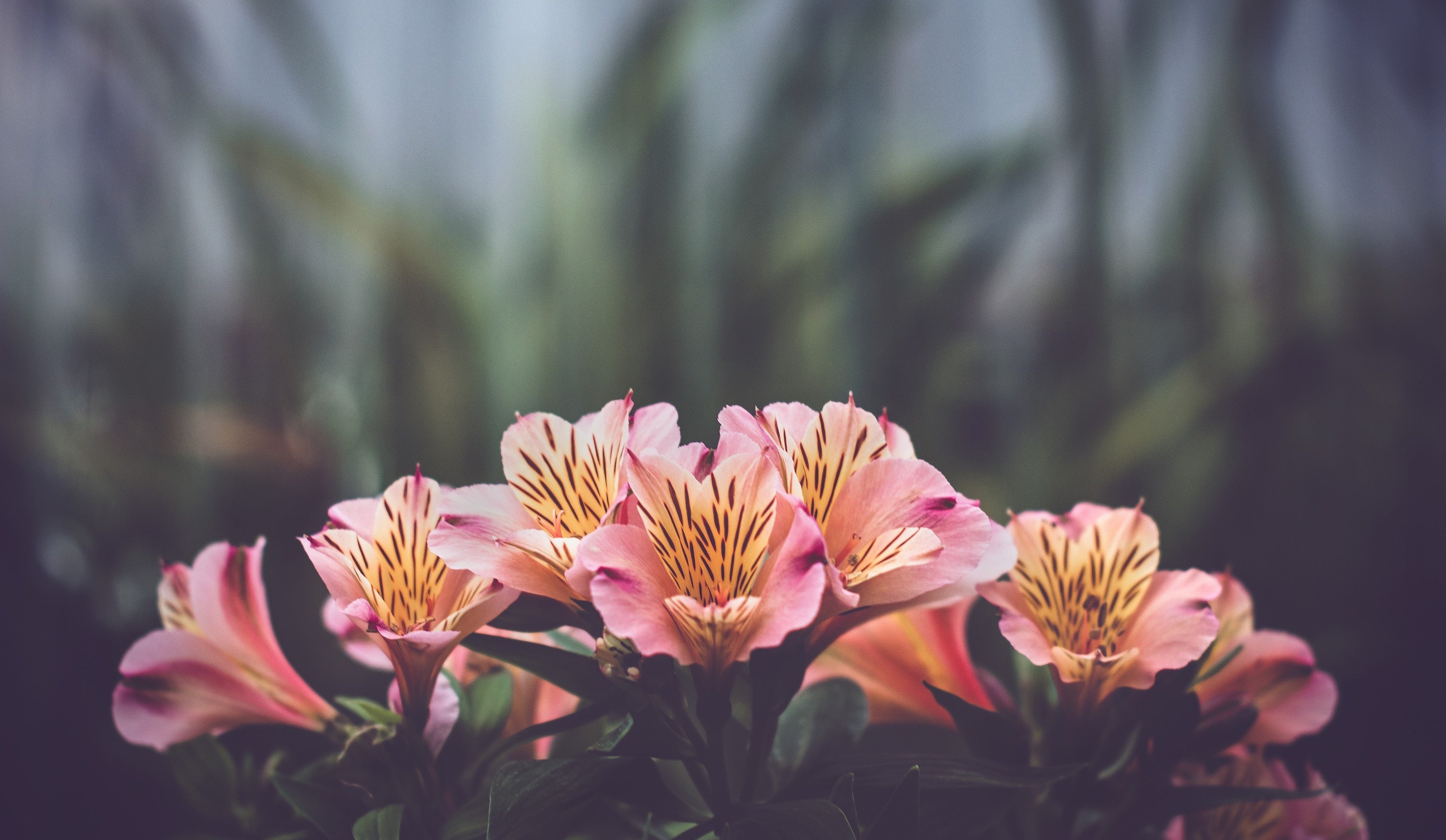
All About Alstroemerias
Native to South America, alstroemeria is a genus of flowering plants in the family Alstroemeriaceae. It is commonly known as the Lily of Incas or the Peruvian Lily. This flower is a symbol of wealth prosperity and fortune. It also symbolizes devotion and friendship, and the twists represents trials and tribulations in the friendship. Available in a myriad of colours, these flowers become a fun choice for many occasions. Alstroemeria are half hardy perennials that strike in late spring or early summer. They are named after a Swedish botanist, Baron Claus von Alstromer, who collected its seeds from Spain in 1753.

What are the different types of alstroemeria?
Peruvian Lily is a genus of 50 species. They all vary in their seasons and each plant differs in its size. These plants do not take disruption well, so it is better to plant them at a permanent location. The two primary types of alstroemeria are the ligtu type and the aurea variety.
Ligtu type is a perennial hardy plant in USDA zones 8 through 10. These lily-like flowers have cold intolerance. They are streaked with spotted throats with a rounded bunching habit. They range in colours of yellow, pink, red, purple, lavender and white. Their four inch long lance-shaped foliage is green to greenish silver, blue, and grey in colour. Ligtu variety blooms in July and lasts for weeks. They reach up to two feet in height and three feet width at maturity.
Aurea type is a perennial hardy plant in USDA zones 7 through 10. These flowers are more tolerant to cold conditions than ligtu types. They have spotted and streaked throats with upright bunching growth habit, available in yellow or orange. Its four inch long lance-shaped leaves can be green to greenish silver. Aurea variety blooms in June & July, and lasts for weeks. They reach up to three feet tall and wide at maturity.
What is the socio-cultural significance of an alstroemeria?
It was in late 18th century that botanist Baron Claus von Alstromer brought seeds from the Peruvian Lily from South America to the European continent. Since this flower is native to Peru and only recently spread across the world, there is no classical Victorian tradition and significance attached to it. However, Peruvian lilies stand for love and devotion. You may express your love and support to your friends and families on many occasions in many ways.
When to give alstroemeria as gifts?
Alstroemeria symbolise friendship, love and devotion. With a wide variety of colours and meanings attached to them, Peruvian lilies become a good choice for many occasions. Their message is to hold onto your friends and loved ones close and let them know how much you cherish them. Let them be your perfect good luck gift or token. Branch out and build in new relationships by giving these pretty bunch of flowers to people you adore.
What do different colours of alstroemeria symbolise?
Like most flowers, Peruvian lilies too come in a variety of colours with various meanings attached to them.
Red or Pink alstroemeria are a symbol of affection and love. They also symbolise romantic feelings for someone.
Orange ones symbolize positive force and positive energy. If you want to make someone happy or wish them luck for achieving their goals and aspirations, you may pick orange alstroemeria.
For someone unique and beautiful, present them with the purple alstroemeria. They are the symbol of uniqueness and elegance.
Yellow alstroemeria symbolize joy and happiness. Present these to your friends on their special occasions or simply decorate their homes with these.
White ones are a symbol of spiritual life and purity. You may use them for wedding décor.
Yellow, white and blue ones also symbolise worry. To show your concern to a friend, you may present them with any of these beautiful flowers.

How to arrange alstroemeria and pair them with other flowers?
Unlike most cut flowers, alstroemeria do not need a companion to contrast. One can call them self-sufficient flowers. They can stand on their own for they come with soft shaded petals streaked with dark hues. However, if you want to couple them with others, you must know these petite lily-shaped blossoms perfectly complement larger, more dramatic flowers like roses, peonies, tulips, Asiatic lilies, chrysanthemums, etc.

How to grow and care for alstroemeria at home?
Most flowers can be grown in your home gardens if taken care of well. Here are a few dos and don’ts if you wish to grow Peruvian lilies
- Alstroemeria must be planted between September-October or February-March.
- Plant them 60 cms apart in cool climate with partial shade.
- Soil should be well-drained, rich in organic matter. Its PH should be 6 to 7.
- Water them weekly to keep the soil moist. Do not overdo irrigation as it may damage the roots.
These wonderful flowers come with a long vase life. It is natural to want them to last for as long as possible. Here’s how you can increase the longevity of your Peruvian lilies once cut:
- Cut/trim your alstroemeria at an angle increasing the surface area for water absorption.
- Remove any leaves that may sit underneath the waterline when placed in a vase. This will allow water to go straight to the flower head.
- Mix water (preferably cool) appropriately with the flower food as instructed on the sachet, neither too concentrated nor too diluted.
- Repeat the entire process every 3-4 days.
- Keep the vase in cool shady spot.
- Avoid proximity with ripening fruits.
Some Fun Facts:
- Alstroemeria/Peruvian lilies have no fragrance.
- They have a vase life of about two weeks
- Not all of them have striped petals.
- They stop producing flowers if they get hot
- Alstroemeria naturally produce some purely vegetative (non-sexual) stems.
- The leaves on the stems grow upside down with no possible explanation
- Alstroemeria seeds can take from a few weeks to an entire year to germinate.
If your heart is already set on these ecstatic beauties, The Flora can help you with a bunch of 12 blooms that would look great in a medium to large sized vase. If you want to pair them with others, you might want to consider asiatic or oriental lilies.
Get a monthly subscription or order a bunch, as you may like it.
NOTE: One must always wear gloves when handling this plant. It contains levels of toxicity which may cause allergic reaction if came in direct contact with skin.
Author
Shikha Nangru




